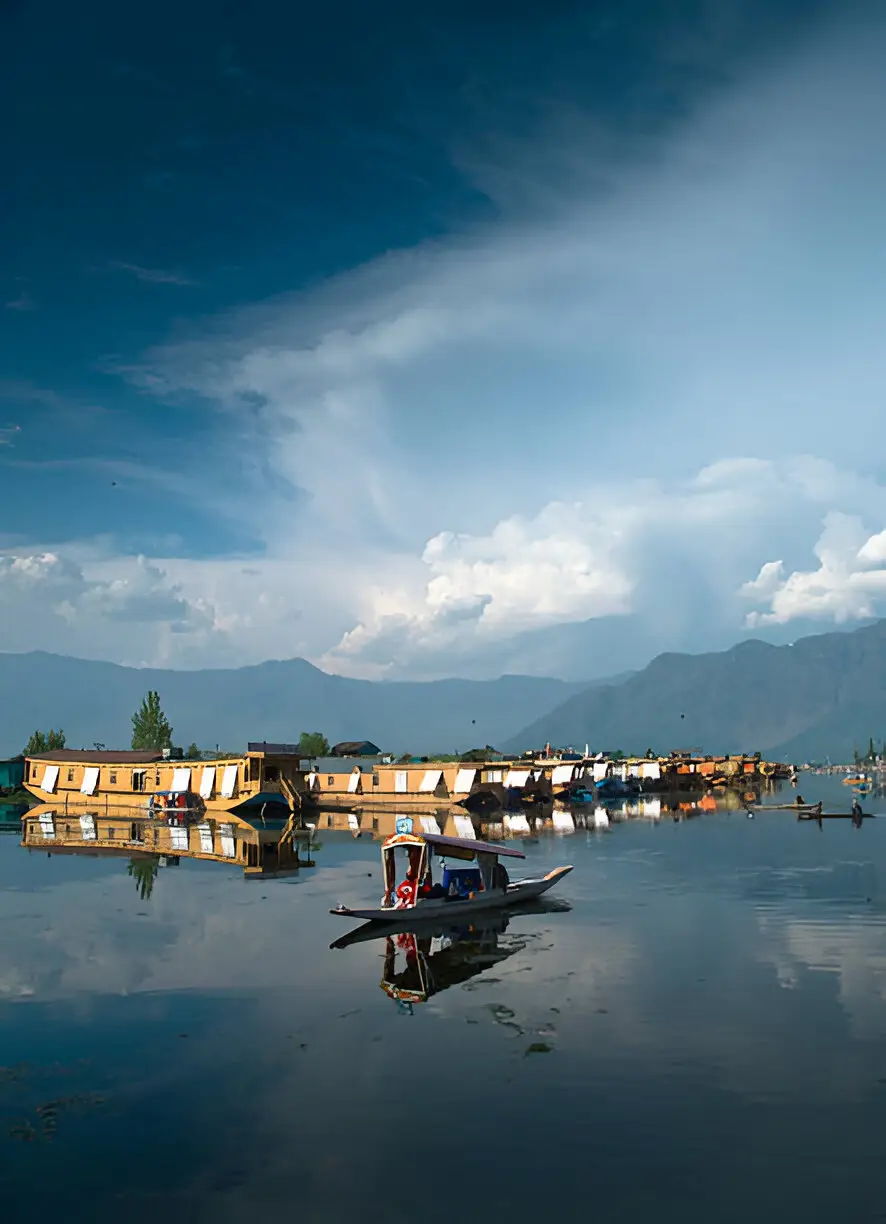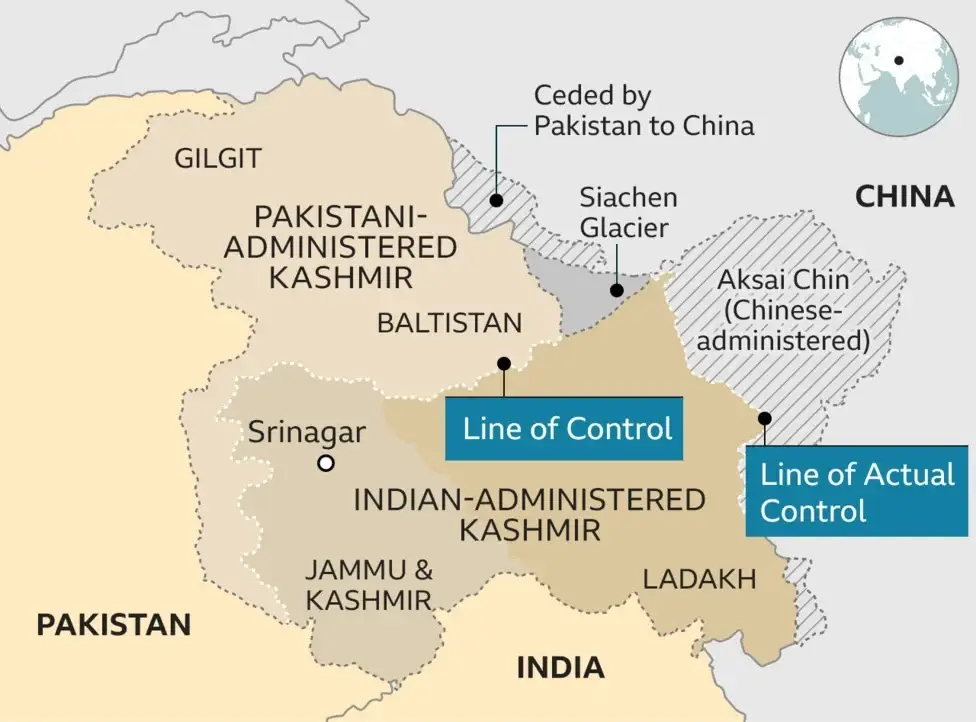Kashmir, with a history spanning over 5,000 years, has been a center of Hinduism, Buddhism, and later Islam and Sufism. It was ruled by various dynasties, including the Mauryas, Kushans, and Karkotas, before Shah Mir established Muslim rule in the 14th century. Foreign powers significantly influenced its fate, with the Mughals annexing it in 1586, followed by Afghan and Sikh rule. In 1846, the British took control after the First Anglo-Sikh War, selling it to Maharaja Gulab Singh under the Treaty of Amritsar, setting the stage for future political conflicts.
Kashmir has been a centre of political and territorial disputes for centuries, particularly between India and Pakistan. This leaflet provides a concise timeline of key events from 1846 to 2019. Kashmir often referred to as ‘Paradise on Earth,’ Kashmir has a rich yet turbulent history. Covering a total area of approximately 222,236 square kilometres, the region is currently administered by India, Pakistan, and China. Following the abrogation of Article 370 and Article 35A on 5th August 2019, Indian Administered Jammu and Kashmir lost its special status and was reorganised into two separate union territories: Jammu & Kashmir (55,538 sq km) and Ladakh (59,146 sq km), both under the direct control of the Government of India.
Pakistan administers a total of 85,793 square kilometres, which includes Azad Jammu and Kashmir (AJK) covering 13,297 sq km and Gilgit-Baltistan spanning 72,496 sq km. China controls approximately 37,555 square kilometres of the region, which includes Aksai Chin (38,000 sq km) and the Shaksgam Valley (5,180 sq km), which Pakistan ceded to China in a 1963 agreement.


The Muslim Conference was rebranded as the National Conference to unite all communities for democracy. Led by Sheikh Abdullah, it spearheaded self-governance efforts and opposed the Maharaja’s rule.
The Indian Independence Act of 1947 allowed princely states to join India, Pakistan, or stay independent. This left Maharaja Hari Singh in a dilemma as he initially sought independence for Jammu and Kashmir.
Maharaja Hari Singh created a legislative assembly for governance, but real power stayed with him. Though limited, it was a step toward political representation in Jammu and Kashmir.
On 4th October 1947, rebels and political leaders formed a provisional government for Azad Kashmir, seeking an independent administration apart from Maharaja Hari Singh’s rule.
The British sold Kashmir to Maharaja Gulab Singh, making it a princely state under Dogra rule with British oversight. This deal fueled unrest among the Muslim majority, leading to lasting tensions.

Maharaja Hari Singh enacted the State Subject Law to protect Kashmiri rights, limiting property ownership and government jobs to locals. Though it shaped Kashmiri identity, its 2019 revocation sparked controversy.
Widespread protests against Maharaja Hari Singh’s rule led to the killing of 22 protesters on 13 July 1931. This pivotal event ignited organized resistance and long-term political movements.
Sheikh Abdullah founded the Jammu & Kashmir Muslim Conference to fight for Kashmiri Muslims' rights and self-rule. The party gained strong support, shaping future political struggles.
On 22nd October 1947, tribal forces, supported by Pakistan’s government invaded Jammu and Kashmir. The attack led to widespread violence and atrocities, forcing Maharaja Hari Singh to seek military assistance from India, which ultimately led to the signing of the Instrument of Accession.
On 24th October 1947, in an official declaration, the Provisional Azad Government claimed to have been reformed. In its statement, the newly formed government proclaimed: “The Provisional Azad Government, which the people of Jammu and Kashmir have set up a few weeks ago with the object of ending intolerable Dogra tyrannies and securing to the people of the State, including Muslims, Hindus, and Sikhs, the right of free self-government, has now established its rule over a major portion of the State territory and hopes to liberate the remaining pockets of Dogra rule very soon.”
On 26th October 1947, Maharaja Hari Singh signed the Instrument of Accession, at the time, Lord Mountbatten, the Governor-General of India, accepted the accession with the condition that once law and order were restored, the final decision on Kashmir’s status should be determined by the wishes of the people. However, the people were never given the opportunity to decide, and the United Nations did not recognise the accession as final, instead advocating for a plebiscite to determine Kashmir’s future.
On 1st January 1948 India formally took the Kashmir issue to the UN.
The Karachi Agreement was signed between Pakistan and the leaders of Azad Kashmir, delineating the administrative control of Gilgit-Baltistan and Azad Kashmir.
Several international human rights organisations have documented the ongoing human rights violations in Kashmir, highlighting restrictions on freedom of speech, unlawful detentions, and civilian casualties.
Several surveys have been conducted over the years to assess the political aspirations of the people of Jammu and Kashmir.
The United Nations Security Council has passed several resolutions addressing the Kashmir dispute.
The Kashmir Freedom Movement is working for the integration, mobilization, and empowerment of the people of Jammu and Kashmir towards the self-determination cause. By civil resistance and advocacy, we shall try to create a just, independent, and modern welfare state.
© Copyright 2025 - KFMovement - All Rights Reserved.